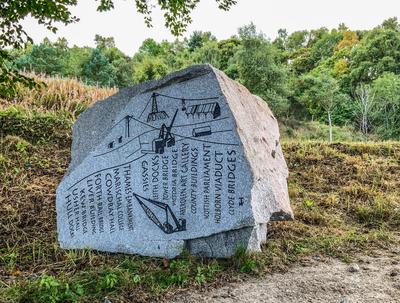100 Flowers
By
James Winnett
2014 - 2015
- Drawing and Illustration
- Painting
- Urban Dynamics & Public Realm
- 100 Flowers
- Lace Pattern
- Gold Leaf
- Project
Dimensions
62 x 46 (framed)
The ten works which form this series have been developed as part of an in depth research process that has seen the artist explore a number of themes linked to the significant cultural, horticultural and emotional role flowers have played and continue to play both locally and around the world. Examining the history and local distribution of wild flowers led the artist to visit the Govan dock areas, access local biodiversity records, study the herbarium archives at Glasgow Botanical Gardens and read up on the complex role horticulture, agriculture and industry have played in introducing a host of non-native species to the local area.
This simple process of displaying artworks in the places we live and work that re-present the plants and flowers we find outside has been an interest of almost every culture throughout human history. The accumulative endeavours of generations of artists has meant that many flowers have since become strongly associated with distinct places, cultures, identities and emotions. The ten patterns each contain flowers and other forms which have become emblematic for a whole host of different cultures and contexts.
The ten works have been produced by working over the top of existing lace pattern designs produced at a factory in Darvel, Ayreshire during the 1940s and 50s and found by the artist at an architectural salvage yard across the Clyde in Whiteinch. The ten original paper lace designs have each been worked over the top of using a variety of materials including gouache paint, ink and gold leaf. The original lace pattern designs have been examined closely to identify the various motifs and flowers present in the same way that a botanist or archaeologist would would work with a new specimen or artefact. The patterns themselves often include a variety of motifs and geometric designs that draw on long cultural and artistic traditions. By adding to the existing imagery and transforming the content of each piece the works take on new meanings as layers of narratives are built up from a variety of diverse cultural and botanical references.
As each piece is developed a connection is made on the surface of the paper between the original labour of the designer, the machine operator and the artist over half a century later. Intervening in this way the artist bringing new life to these industrial artefacts, bridging the gap between the industrial past and the contemporary creative identity of the city. The works all examine the relationship between the object as a historical artefact, a tool in a mechanised process, and the object as hand painted artwork.
As industrial artefacts they link both to the history of exporting Scottish manufactured goods and to the representation of flowers from around the world. Each pattern contains stylised flower and plant motifs in repeating patterns. Although it is hard to find clear evidence it would seem that such designs inherit numerous elements from rich history of lace and textile manufacturing both locally in Scotland but also with references to designs that can be found across India, the Middle East, Africa and Europe. Although the lace itself was usually monotone, the original lace patterns often contain bright red and green colours which would have been read and converted at the factory into punchcards which in tern would be used by mechanised looms to weave the lace.
As a series of ten the works all examine the overlapping processes of productive and creative labour while linking to notions of cultural identity, the representation of nature and travel. As industrial artefacts used to produce domestic lace the patterns combine references from colonialism and factory employment to notions of home, health and memory. There is also a connection with the earliest development of mechanised looms and computer systems which play such a key role in modern healthcare. Through interpreting the geometric and natural forms the works promote a process of pattern recognition, again linking to the medical and biological scientific process.
Helping Artists Keep Going
Axis is an artist-led charity supporting contemporary visual artists with resources, connection, and visibility.







